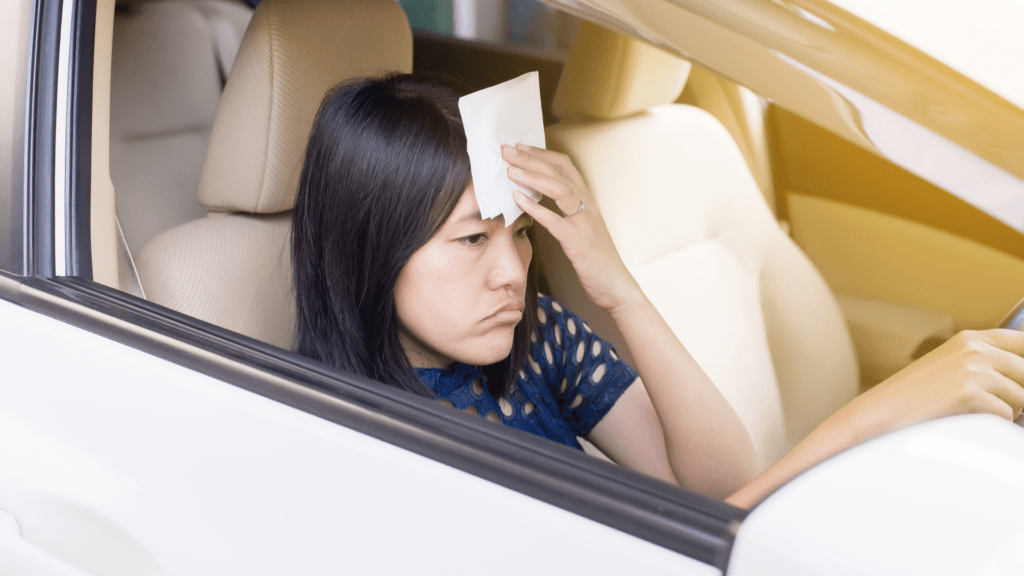- The Darker Side of Glass Roofs - March 11, 2025
- The Dark Side of Panoramic Sunroofs - May 30, 2024
Driving a car equipped with a sunroof or a full/partial glass roof is a luxury that many enjoy and are willing to pay extra for. Increasingly, these features are becoming standard in many high-end vehicles. For instance, it’s nearly impossible to find a new Mercedes without a sunroof, and many other brands follow suit.
Drivers appreciate and enjoy these features for various reasons. It’s often said that once you experience a sunroof, you won’t want to be without one, regardless of the cost.
The idea behind a sunroof is to enhance the comfort and enjoyment of driving. Sunroofs can be used year-round, though they are most appreciated in pleasant weather when they can be opened without any adverse effects. Typically, this means using the sunroof when the outside temperature is comfortable enough not to require air conditioning.
When using a sunroof, it must be completely closed and covered with a protective shade if the air conditioning is on. This is because the glass absorbs heat, and without an effective shade, it radiates that heat into the car, making it hotter. Traditional sunroofs are well-designed to prevent this issue, but newer panoramic sunroofs often fall short in this regard.

While sunroofs have their bright side, offering a pleasurable driving experience, they also have a dark side, particularly with the newer designs. Many drivers are unaware of the extent of these issues and either learn to live with them or devise homemade solutions.
This review explores the benefits of sunroofs and highlights the adverse effects of newer panoramic sunroof designs, especially during high-temperature conditions when air conditioning is necessary. The higher the temperature and sunnier the weather, the more pronounced these adverse effects become.
Table of Contents
New Designs Introduce the Dark Side
Traditional sunroofs have been a popular feature for decades, providing comfort without significant drawbacks. These sunroofs typically feature tinted glass measuring about 50 cm by 80 cm and a solid interior cover that prevents sunlight and heat from entering the car. When closed, these covers seal off outside elements effectively, allowing the car’s air conditioning system to maintain a comfortable temperature efficiently.
However, the newer panoramic sunroof designs have introduced several issues. These designs prioritize aesthetics over functionality, resulting in significant flaws. Although a few manufacturers have avoided these issues, most have not. This review aims to highlight these flaws and the necessity for redesign to benefit consumers.
The typical new sunroof now covers at least one-third of the car’s roof and spans the full width of the vehicle. These sunroofs often use dark-tinted glass that absorbs maximum heat, similar to how a black surface does. Without effective insulation or shading, this design causes the sunroof to radiate heat into the car, making occupants uncomfortable. Even with the air conditioning at full blast, it struggles to keep the interior cool.
Panoramic sunroofs, which cover up to two-thirds of the roof, exacerbate these issues. They often lack proper insulation, leading to even greater heat radiation inside the car. While some panoramic sunroofs are insulated well, many are not, and they suffer from the same problems as the poorly insulated standard sunroofs.

This “dark side” of sunroofs, a metaphor for the adverse effects, results in significant discomfort for drivers and passengers. These issues are particularly severe in hot weather when air conditioning is necessary. Despite the severity, many drivers accept these problems as normal, believing they must tolerate and adjust to them. However, this is not a normal feature but a design flaw introduced by several major car brands.
A personal experience underscored this issue. While test driving a 2022 VW Golf GTI on a sunny day with an outside temperature of 28°C, I felt an almost burning sensation from the sunroof area despite the air conditioning being on and the sunshade in place. The shade was a net-like, non-thermal material that offered no protection from the heat. This experience, coupled with the widespread use of similar sunroofs in many new cars, highlighted the seriousness of the problem.
Traditional sunroofs, with their less dark tinted glass and solid, thermally protective covers, provide adequate insulation. These sunroofs maintain a consistent interior temperature and do not radiate excessive heat, even on hot days. This contrasts sharply with the new designs, which fail to offer the same level of comfort and protection.
Many brands, including VW, Audi, BMW, Mercedes, Volvo, and Mini, have adopted these flawed designs. Interestingly, American, Canadian, and many Asian cars do not seem to have these issues to the same extent. Electric vehicles, especially Tesla, are also affected, with some Chinese EVs following the same flawed design.
The primary motivation behind these new designs seems to be aesthetics—making cars look more modern and appealing. While the intent might be to enhance the driving experience by offering a view of the sky, this comes at a significant cost to comfort and energy efficiency. Poorly insulated sunroofs force air conditioning systems to work harder, increasing energy consumption. This not only affects fuel economy but also has broader environmental implications.
In summary, while the new sunroof designs aim to enhance cars’ aesthetic appeal, they introduce several adverse effects that compromise comfort and efficiency. A redesign is essential to address these issues and improve the overall driving experience.
Proof of Flawed Design in New Sunroof Versions
The latest iterations of sunroof designs feature large expanses of very dark, tinted glass on modern car roofs. This design trend extends to panoramic and full glass roofs as well. While this dark glass offers protection from UV rays, it fails to shield occupants from heat in summer or cold in winter. The larger the glass surface area, the weaker the protection against temperature extremes. Full glass roofs, followed by panoramic roofs and standard sunroofs, all exhibit the adverse effects we’ve termed the “dark side” of this car feature.
Dark-tinted glass absorbs solar energy to such a degree that its temperature can be 2-3 times hotter than the ambient temperature. For instance, on a 30°C day, the glass temperature can soar to 80-90°C, resulting in discomfort inside the car. Despite attempts to mitigate this with net-like shades, only proper thermal insulation can effectively protect occupants from this intense heat. A solid cover traps the heat between the cover and the glass ceiling, preventing it from radiating into the car and onto occupants.

In contrast, traditional sunroof designs feature tinted but not excessively dark glass, allowing for enjoyable natural light without excessive heat. Their solid covers provide effective thermal insulation, maintaining a comfortable interior temperature with minimal energy consumption from the air conditioning system.
The flaws in the new design become even more evident in winter. While the outside temperature affects both the car body and any glass surfaces, the lack of insulation in newer sunroof designs allows cold temperatures to permeate the interior. Cars with poorly insulated sunroofs or full glass roofs struggle to reach and maintain a comfortable interior temperature, requiring more energy and time for heating.
During summer, the lack of proper heat protection beneath the glass exacerbates the issue. Most car makers opt for semi-transparent, non-thermal net-like shades that allow heat to penetrate into the cabin. In high temperatures, the car must be cooled down significantly before entry, and even then, temperatures inside can be intolerable. This excessive heat absorption by flawed sunroof designs forces air conditioning systems to work harder, consuming more energy and diminishing fuel efficiency.
In summary, the flawed design of newer sunroof versions leads to significant discomfort and increased energy consumption for both heating and cooling. This not only impacts the pockets of car owners but also has broader environmental implications, representing another facet of the “dark side” of sunroofs.
How Do We Prove and Measure the Dark Sides of Flawed Design?
The adverse effects of new-style sunroofs, panoramic roofs, and full glass roofs can be scientifically established with precision, down to the last digit. Similarly, the consequences of these flaws on individuals, costs, energy wastage, environmental degradation, and other impacts can be quantified. This process mirrors the scientific scrutiny applied to products like oil, tobacco, and drugs, where rigorous analysis reveals their adverse effects.
To initiate this process, we need authoritative figures to investigate this industry misconduct. Historically, industries seldom self-regulate satisfactorily; corrective action usually follows exposure and enforcement. The False Claims Act in the USA illustrates the repercussions of corporate misbehavior.
Moreover, individuals can experience and verify the flawed design of these sunroofs firsthand. On a sunny day with temperatures between 25°C and 30°C, approach a parked Tesla or any car with a similar design. If the car’s body is black, touching it may yield temperatures 2-3 times hotter than the ambient temperature, potentially reaching up to 100°C. The full glass roof, also tinted black, will similarly radiate intense heat. Effective insulation could mitigate this, but the lack thereof leads to uncomfortable temperatures inside the car, affecting occupants and increasing energy consumption.
Owners of these modern cars don’t need advanced knowledge to recognize this issue; a simple touch of the overheated surfaces above their heads suffices. This tactile experience mirrors my own when test driving a VW GTI with a poorly designed sunroof and ineffective shade, failing to shield the car’s interior from the sun’s heat.
Measurements Using a Laser Thermometer
Upon realizing the implications of modern design sunroofs and glass roofs in cars, I conducted straightforward research using a handheld laser thermometer. Despite its simplicity, the results were enlightening, shedding light on the stark differences between new and traditional designs, particularly in white and black car bodies assuming a daily temperature of 30°C on a sunny day.
New Design:
- Black Car: Black car bodies exhibited temperatures ranging from 60°C to 90°C or more. Dark sunroofs (like those in the VW GTI) and full glass roofs (as seen in Tesla vehicles) mirrored these temperatures. Inside the car, the glass surface could be 5°C hotter than the ambient temperature. For cars with ineffective net-like shades, the interior temperature was only slightly lower than the glass, failing to provide adequate protection from the heat.
- White Car: White car bodies were significantly cooler, typically reaching temperatures around 5-10°C above the daily temperature. However, the interior temperature was less affected by the external heat compared to black cars due to the lower temperature of the car body.
Traditional Design:
- The traditional design, featuring smaller and lighter-colored sunroofs, maintained more moderate temperatures. Glass temperatures reached a maximum of 40-50°C, owing to the lighter tint. The presence of a hard, thermal cover insulated the glass, preventing it from affecting the interior temperature significantly.
- White car bodies in traditional designs also experienced milder temperature increases, just a few degrees above the daily temperature. With proper insulation, the interior temperature was easier to regulate, requiring less strain on the air conditioning system.
These measurements reveal that the temperature of dark glass and black car bodies can reach 2-3 times the daily temperature. Such extreme temperatures exacerbate the discomfort for occupants, necessitating excessive use of air conditioning to compensate for the lack of insulation in modern sunroof designs.
Ranking of Sunroof Variants by Dark Side:
- Tesla: Full glass roofs with no insulation rank highest due to their extensive surface area radiating heat directly into the car.
- Panoramic Roof: While smaller than full glass roofs, inadequately insulated panoramic roofs generate significant heat.
- Sun Roof: Covering about 1/3 of the car’s roof, these dark-tinted sunroofs found in many new generation cars contribute to increased interior temperatures.
The pattern is clear: the larger the non-insulated glass surface of the roof, the more heat is radiated into the cabin, requiring higher energy consumption to maintain a comfortable temperature. In this context, bigger does not equate to better energy efficiency but rather leads to wasteful energy consumption, amplifying the environmental impact of these flawed sunroof variants.
Are Adverse Effects of Sunroof Heat Significant?
It’s a valid question: how significant are the effects of the new sunroof design? Some might dismiss the inconveniences as trivial, arguing that people adapt and get used to them, or that the additional energy consumption is negligible in the grand scheme of things. After all, modern cars with their sleek designs and panoramic views are desirable to millions of consumers worldwide. But is the difference between old and new sunroof designs truly insignificant?
Personal Experiences:
Consider my own test drive of a VW GTI with a standard sunroof and an ineffective net-like shade. Despite the air conditioning running, the burning heat from the sunroof made the experience unbearable within minutes. This scenario is not unique; numerous owners of VW, MINI, Audi, and especially Tesla vehicles have reported similar discomfort due to the lack of insulation in their sunroofs. In Tesla cars, with their fully tinted glass roofs, occupants have resorted to wearing hats or homemade insulation to combat the intense heat, even with the air conditioning at full blast.
Societal/Environmental/Economic/Moral/Ethical Consequences:
The consequences of these design flaws extend beyond personal discomfort. Let’s take Tesla as an example. With over 2 million Tesla cars on the road, the additional electricity required to cool these vehicles due to the heat absorbed by their glass roofs amounts to billions of dollars annually. This wasted energy has far-reaching implications, from environmental degradation caused by increased fossil fuel consumption to the socioeconomic impact of squandered resources. Imagine if this electricity could instead power hundreds of thousands of homes, reducing pollution and benefiting society as a whole.
Acknowledging the Issue:
While some may choose to ignore these shortcomings or defend the manufacturers, it’s essential to acknowledge the real-world consequences of flawed sunroof designs. Denial or complacency only perpetuates the problem. As consumers, we have the right to demand better from car manufacturers and hold them accountable for prioritizing comfort, efficiency, and sustainability in their designs.
In conclusion, the dark side of sunroof variants is not just a matter of personal preference; it has significant implications for energy consumption, environmental impact, and overall well-being. It’s time to shine a light on these issues and advocate for smarter, more sustainable automotive design practices.
Scientific Proof Needed
It’s imperative to substantiate the claims made regarding the adverse effects of the new sunroof designs with scientific measurements. Only then can we objectively assess whether these effects are within acceptable limits or warrant immediate action. Simple measurements using a laser thermometer have already revealed concerning behaviors associated with the dark glass roofs of modern cars.
The crux of the issue lies in the inadequate, uninsulated shades beneath these glass surfaces. These shades fail to provide protection from external heat or cold, resulting in discomfort for occupants and increased energy consumption to maintain desired temperatures inside the vehicle.
Conclusion
The ramifications of these design flaws extend beyond individual inconvenience to encompass societal, economic, and environmental concerns. While some may adapt to these issues, the cumulative impact on a global scale is significant.
From a societal and environmental perspective, the magnitude of wasted energy and resulting pollution is staggering, especially considering the sheer number of vehicles affected by these design flaws. It’s imperative that we address the dark side of sunroofs and poorly designed roofs to mitigate their adverse effects on our planet and society as a whole.



